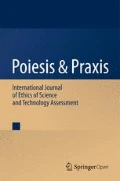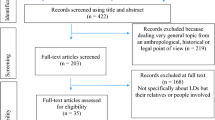Abstract
Psychological traumatisation, as we understand it today, was—in terms of the history of ideas—anticipated by various approaches which have had a lasting impact on modern psychiatry, psychotherapy, and psychosomatic medicine. On the one hand, there is the traditional concept of possession and exorcism with its impressive psychodynamics. On the other hand, there is the theory of the imagination, of an illusion in the sense of a pathogenic infection. Especially the pathological teachings of Paracelsus (sixteenth century) and Johann Baptist van Helmont (seventeenth century)—the latter having advanced the former’s alchemist approach—demonstrate the extent to which demonological, parasitological, and psychological ideas were amalgamated in their “ontological” notion of a disease. Only the introduction of hypnotism in the middle of the nineteenth century made possible a psychological or psychodynamic understanding of psychological trauma in the modern sense. Hypnotism was striving to strictly dissociate from the magical and natural philosophical speculations of mesmerism and its theory was quite compatible with the model representations of scientific medicine. Sigmund Freud was able to tie in his ideas of hysteria and neurosis with this concept and especially to define repression of (infantile) sexuality as the cause of a culturally ineluctable psychological trauma. Finally, a brief survey of medical history is given to explore artificial trauma as a healing factor.
Zusammenfassung
Die psychische Traumatisierung im heutigen Verständnis wurde ideengeschichtlich von verschiedenen Ansätzen antizipiert, welche die moderne Psychiatrie, Psychotherapie und Psychosomatik nachhaltig beeinflusst haben. Zum einen ist hier das traditionelle Konzept von Besessenheit und Exorzismus mit seiner eindrucksvollen Psychodanymik zu nennen, zum anderen die Lehre von der Imagination, der Ein-Bildung im Sinne eine pathogenen Infektion. Gerade bei Paracelsus (16. Jh.) und Johann Baptist van Helmont (17. Jh.), der dessen alchemischen Ansatz weiterentwickelte, ist zu beobachten, wie sehr dämonologische, parasitologische und psychologische Vorstellungen in ihrer Krankheitslehre (ihrem “ontologischen” Krankheitsbegriff) miteinander verquickt waren. Erst mit der Einführung des Hypnotismus in der Mitte des 19. Jahrhunderts, der sich strikt von den magisch-naturphilosophischen Spekulationen des Mesmerismus abgrenzen wollte und dessen Theorie durchaus kompatibel mit den Modellvorstellungen der naturwissenschaftlichen Medizin war, wurde ein psychologisches bzw. psychodynamisches Verständnis des psychischen Traumas im modernen Sinne möglich. Hieran konnte Sigmund Freud mit seinem Begriff der Hysterie bzw. Neurose anknüpfen und insbesondere die Verdrängung der (infantilen) Sexualität als Ursache des kulturell unhintergehbaren psychischen Traumas begreifen. Abschließend wird in einem medizinhistorischen Abriss das künstliche Trauma als Heilfaktor kurz beleuchtet.
Résumé
La traumatisation psychologique, telle que nous la comprenons aujourd’hui, fut, conformément à l’histoire des idées, anticipée par diverses approches qui ont eu un impact durable sur la psychiatrie moderne, la psychothérapie et la médecine psychosomatique. D’un côté, nous avons le concept traditionnel de possession et d’exorcisme avec ses manifestations psychodynamiques impressionnantes. D’un autre côté, il y a la théorie de l’imagination, de l’illusion impliquée dans une infection pathogène. C’est surtout l’enseignement de la pathologie de Paracelse (16ième siècle) mais aussi Johann Baptiste Van Helmont (17ième siècle), ce dernier ayant fait évoluer l’ancienne pratique de l’alchimie, qui démontrent à quel point la démonologie, la parasitologie et les notions psychologiques étaient amalgamés dans leur conception “ontologique” de la maladie. L’introduction de l’hypnose, au milieu du 19ième siècle, a rendu possible une compréhension psychologique ou psychodynamique du trauma psychologique, au sens moderne du terme. L’hypnose s’est évertuée à se dissocier complètement des spéculations philosophiques magiques et naturelles de mesmérisme et sa théorie était assez compatible avec les représentations en règle de la médecine scientifique. Sigmund Freud a été capable d’associer ce concept dans ses notions d’hystérie et de névrose et surtout de définir la répression de la sexualité (infantile) comme étant un trauma psychologique culturel inéluctable. Finalement, un bref tout d’horizon de l’histoire médical nous permet d’aborder le trauma artificiel comme un facteur de guérison.
Similar content being viewed by others
References
Baunscheidt C (1851) Baunscheidtismus. Vom Erfinder dieser neuen Heillehre. Wittmann, Bonn
Bechterew Wv (1905) Die Bedeutung der Suggestion im sozialen Leben. Bergmann, Wiesbaden
Bernheim H (1888) Die Suggestion und ihre Heilwirkung. Transl. by Freud S. Deuticke, Leizig
Bernheim H (1891) Neue Studien über Hypnotismus Suggestion und Psychotherapie. Transl. by Freud S. Deuticke, Leipzig
Breuer J, Freud S (1893) Über den psychischen Mechanismus hysterischer Phänomene. Vorläufige Mitteilung. In: Freud S (1960–68) Gesammelte Werke, vol 1. Fischer, Frankfurt/M, pp 81–98
Breuer J, Freud S (1895) Studien über Hysterie [excepting the contributions by Breuer alone]. In: Freud S (1960–68) Gesammelte Werke vol 1. Fischer, Frankfurt/M, pp 75–312
Capra G (1997) Erfahrungen eine Diözesanexorzisten. Anhören, Werten, Befreiungsgebet, Exorzismus. In: Resch A (ed) Paranormologie und Religion. Resch, Innsbruck, pp 479–502
Freud S (1916/17) Vorlesungen zur Einführung in die Psychoanalyse. In: Freud S (1960–68) Gesammelte Werke, vol 11. Fischer, Frankfurt/M
Freud S (1921) Massenpsychologie und Ich-Analyse. In: Freud S (1960–68) Gesammelte Werke, vol 13. Fischer, Frankfurt/M, pp 71–161
Freud S (1950) Aus den Anfängen der Psychoanalyse. Briefe an Wilhelm Fliess, Abhandlungen und Notizen aus den Jahren 1887–1902. Imago Publishing, London
[Helmont JB van = ] Knorr von Rosenroth C (1683) Aufgang der Artzney-Kunst. Reprint 1971 in 2 vols. With contributions by Walter Pagel and Friedhelm Kemp. Kösel, München
Kerner J (1843) Geschichte Besessener neuerer Zeit. Beobachtungen aus dem Gebiete kakodämonisch-magnetischer Erscheinungen nebst Reflexionen von C.A. Eschenmayer, Braun
Le Bon G (1895) Psychologie der Massen. Reprint 1982 with an introduction by Peter R. Hofstätter. Kröner, Stuttgart
Oppenheim H (1889) Die traumatische Neurose. Hirschwald, Berlin
[Paracelsus =] Theophrast von Hohenheim gen. Paracelsus (1922–33) Sämtliche Werke. I. Abteilung: Medizinische, naturwissenschaftliche und philosophische Schriften. Ed. Sudhoff K. Oldenbourg, München, Berlin
Paullini CF (1698) Flagellum salutis; das ist, Curieuse Erzählung, wie mit Schlägen allerhand schwere, langweilige, und fast unheylbare Kranckheiten offt, bald und wohl curiret worden. Knochen, Frankfurt/M
Schott H (1980) Elemente der Selbstanalyse in den “Studien über Hysterie.” Erläuterungen zum Ursprung der psychoanalytischen Technik. Gesnerus 37:235–256
Schott H (1984) Mesmer, Braid und Bernheim, Zur Entstehungsgeschichte des Hypnotismus. Generus 41:33–48
Schott H (1985) Zauberspiegel der Seele. Sigmund Freud und die Geschichte der Selbstanalyse. Vandenhoeck & Ruprecht: Göttingen
Schott H (1993) Die Chronik der Medizin. Dortmund, Harenberg
Schott H (1997) Die Entdeckung des Unbewußten um 1900: Wissenschaftshistorische Anmerkungen zu Sigmund Freud. Berichte zur Wissenschaftsgeschichte 20:287–295
Schott H et al (1998) Der sympathetische Arzt. Texte zur Medizin im 18. Jahrhundert, Beck
Schott H (2000) Die naturwissenschaftliche Medizin um 1900 im Kampf gegen den “Okkultismus”. Scientiarum Historia 26:73–81
Schott H (2002) Synästhesie, Sympathie und sensus communis. Zur medizinischen Anthropologie in der frühen Neuzeit. In: Adler H, Zeuch U (eds): Synästhesie. Interferenz—Transfer—Synthese der Sinne. Königshausen & Neumann, Würzburg, pp 95–107
Schott H (2003) Imagination—Einbildungskraft—Suggestion: Zur “Scharlatanerie” in der neuzeitlichen Medizin. Bonn (unpublished manuscript)
Zedler HJ (1746) Grosses vollständiges Universal-Lexikon, vol 47. Zedler, Leipzig
Zedler HJ (1749) Grosses vollständiges Universal-Lexikon. 59. Zedler, Leipzig
Author information
Authors and Affiliations
Corresponding author
Rights and permissions
About this article
Cite this article
Schott, H. Psychological trauma from the perspective of medical history: from Paracelsus to Freud. Poiesis Prax 6, 191–202 (2009). https://doi.org/10.1007/s10202-008-0064-0
Published:
Issue Date:
DOI: https://doi.org/10.1007/s10202-008-0064-0




